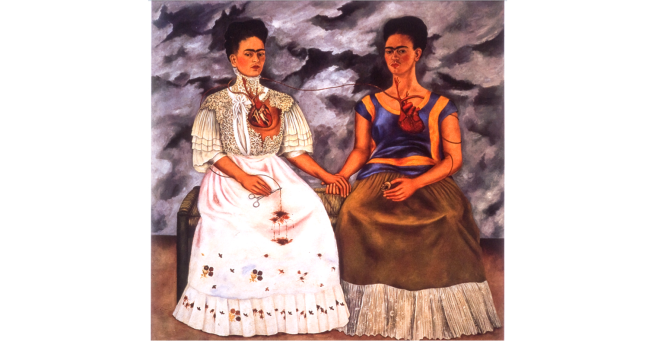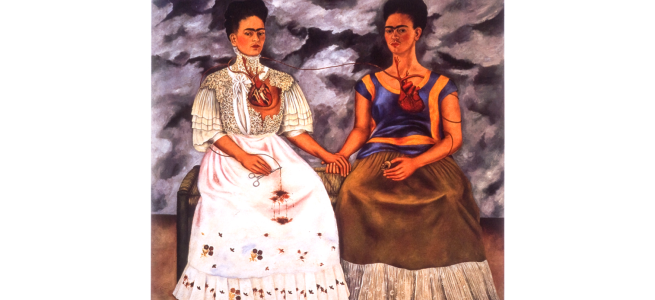Do you know what a ‘puer aeternus’ is? It is Latin for ‘eternal boy’ or we could use ‘puella aeterna’ for a girl. And that is what this post is about.
In mythology the puer refers to a child-god who is forever young. The phrase ‘puer aeternus’ was written by the Roman poet Ovidius in his ‘Metamorphoses’.
In psychology it is an older person whose emotional life has remained at the level of an adolescent or maybe a child in certain areas of life. The puer leads a life in fear in being caught in a situation from which it might not be possible to escape. He or she likes freedom and independence, opposes boundaries and limits and tends to find restrictions not fun at all. That is me! Pierre sometimes calls me a ‘teenager’, mostly when I’m very stubborn against ‘those stupid rules.’
In Jungian psychology the puer aeternus is an example of what Jung called an archetype, one of the “primordial, structural elements of the human psyche[1]“.
The shadow of the puer is the senex (the older one) which associates with disciplined, organized, rational and controlled. Conversely the shadow of the senex is the puer who we can describe as unbounded instinct, disorder and intoxication. Very very broad terms!
The puer himself has positive and negative connotations. The “positive” side of the puer appears as the Divine Child who symbolizes newness, potential for growth, hope for the future. The “negative” side is the child-man who refuses to grow up and meet the challenges of life face on, waiting instead for his ship to come in and solve all his problems.
Those two can tie together in “what is meant is the boy who is born from the maturity of the adult man, and not the unconscious child we would like to remain[2].”

‘Now or Neverland’ (1998) is a book written by Jungian analyst Ann Yeoman dealing with the puer aeternus in the form of Peter Pan, one of the most well-known examples of the concept in the modern era.
Peter Pan syndrome is the popular psychology concept of an adult who is socially immature. The category is an informal one invoked by laypeople and some psychology professionals in popular psychology. It is not listed in the Diagnostic and Statistical Manual of Mental Disorders, and is not recognized by the American Psychiatric Association as a specific mental disorder. In my opinion the Peter Pan Syndrome is not the same as the Inner Child. When you descend into the Peter Pan story you can meet some more darker places of some minds. It all depends from witch context you look at it. For me, I keep the two separate and I will elaborate on the Inner Child in further posts without having that confused with Peter Pan.
The concept of the ‘inner child’ finds it basis on the Jungian notion of the puer of puella. So what is this inner child? Does it exists? How to deal with it?
I don’t know but I’m supposed to work with it. I called it ‘the little one’. And she’s here. I myself find it a very strange situation to work with the ‘little one’ but it was suggested by my therapist and I am desperate enough to try. First and foremost I need to share my concerns of ending up with additional diagnoses because now ‘I’ constist of ‘Me’ ‘The Imposter’ ‘The depression’ and ‘The little one’. I also have Pierre in my life and occasional doggies. Can I keep them all happy?
References.
[1] Sharp, Daryl. Jung Lexicon: A Primer of Terms & Concepts. (pp 109 – 110). Inner City Books, Toronto, 1991.
[2] Jung, “Answer to Job”, par. 742
Online resources.
https://en.wikipedia.org/wiki/Puer_aeternus
Picture click here.


It’s not your job to keep them all happy. It’s your job to keep yourself happy and if they are happy as they come along for the ride, fantastic. If not, they can run away. One of my favorite cats ran away when we got our last dog. This cat now lives two streets over. We’ve even talked with the neighbor who took him in. Our environment was not happy for that cat anymore, so it left…and good for him.
This is a very deep, well done entry. I just finished an advanced copy of a book about the Inner Child that comes out in February. I’ll have a review of it on my website when it’s released. It comes from the point of view that there are nine inner children who stick with the adult. The specific child that manifests the most is the one that suffered the most trauma as a youth. The theory makes sense to me. It’s told with the umbrella idea of sex/porn addiction, but it could apply to anybody I think.
And finally, don’t worry about specific diagnoses. You’re the same person walking into the room as you are walking out. The professionals diagnose us so they can bill insurance and know what kind of medication to prescribe. If I had a bingo card of diagnoses, I probably would be darn near winning the cover-all. I like bipolar disorder and PTSD because they fit the best. Detachment disorder, impulse disorder and imposter syndrome also make sense, but people have said I have ADD or mild schizophrenia or a handful of other things. The truth is, they are all just labels. I am who I am, I am forever changing and evolving and I have to learn who I am so I can live with myself and pay attention to how the medication hopefully helps. It’s just labels. It’s not who you are.
LikeLiked by 2 people
Thank you for your thoughtful comment! I’m happy to read it made some sense to somebody. I feel when telling about the inner child work people tend to find it ‘a bit out there’. But when it works, it works (I’ll have to see in the longer run of course).
Nine inner children, that is a crowd! Is that from the integrative – something – perspective? I think I’ve read something about that too. For me it was difficult to work with the inner child on my own. Now with the therapist and her playing the inner child it clicked.
Animals are so smart, they know when to leave. And actually I see that there is no harm done. When the environment changes and is not fitting anymore, there is no shame in leaving or moving further with your life. Maybe I’ll become a cat lover after all 🙂
I don’t really really worry about diagnoses but with the inner child my head is even more crowdy and that’s what worried me. I’m in recovery so it goes with up and downs, I have those conflicting feelings about everything.
I’m really interested in your review of the book, will definitely read it on your blog!
LikeLiked by 1 person
I liked the book, but I don’t really struggle with the inner child thing. As I told the author, I think I’ve always been 23 years old mentally. Nothing has changed. When I was a kid I was very mature for my age, now I’m immature.
LikeLiked by 1 person
As long as you’re happy and not struggling it’s all good. We don’t want to look for struggles where there are none. And I’ll remember the ‘cat approach’ too, pack up your things and leave. It’s not always the inner child or our mind that poses the ‘problem’.
LikeLiked by 1 person
Did you see what your little buddy accomplished: https://www.nbcnews.com/news/us-news/greta-thunberg-time-s-2019-person-year-n1099396
LikeLiked by 1 person
Her inner child has a voice I think! I think it’s great to hear such strength from younger people. But we are all in the same boat, whether the politicians want to hear it or not. Thank you for the link!
LikeLiked by 1 person
I think her inner child could kick my inner child’s butt.
LikeLiked by 1 person
Haha well well can’t we all play together?
No I think you two would get along perfectly. You just have a different focus. The world needs all kind of people. We have a saying here: ‘God needed one of any (possible) kind’ (and that is why you are here and you’re fine as you are, is the thought behind it).
But if all the inner children would work together, asses would be kicked!!
LikeLiked by 1 person
I’ve never identified a strong inner child within myself. I haven’t felt the desire to revert to childhood, or to carry around bits of childhood as I go through my life as an adult. it’s a fascinating area of study, though.
LikeLiked by 2 people
Believe you me when I say that I don’t want that either, for real. A long time ago I read up on this Inner Child but it just didn’t click with me, seemed weird. As I understand it is mostly used to work through trauma. While stuying there were courses on that but I never took those ones. I must admit while working, espacially with personality disorders, I heard some talk here and there about the ‘wounded child’. Now with the dramatherapy I’m introduced to it and as I said, I will do anything to improve somehow. But I won’t go back to the Terrible Therapist nor to Patsy!
LikeLiked by 1 person
Good plan!
LikeLiked by 1 person
Are you familiar with the term Chief Feature used by Gurdjieff? He uses the term to refer to our default defense mechanism that we developed as children and use throughout our life to deal with the world. According to him it never changes but our relationship to it can change if we can recognize it.
LikeLiked by 1 person
That makes sense to me. I’ve never heard of him, thank you for bringing it to my attention. I think we have some set patterns but they also can grow or evolve with us. Adaptation is important but first we need to understand what we need to adapt, like you said. Thank you for commenting this food for thought 🙂
LikeLiked by 1 person
The term Peter Pan Syndrome gets bandied around a lot, certainly by people like my ex who professes to be like Peter Pan – he’ll never grow up! I think ‘puer aeternus’ sounds about right – ‘who has remained at the level of an adolescent’.
LikeLiked by 1 person
I agree that Peter Pan Syndrome is not the same as an Inner Child. There’s a vast difference between being childlike and being childish. Someone who is in touch with their inner child can release their adult inhibitions in appropriate situations to make the most of de-stressing opportunities, but when they need to make decisions with adult awareness, they can switch back. A person who is childish will throw tantrums when faced with difficult situations and fail to understand why their behavior does not give them what they want.
Actually, from listening to the arguments of small children, I’m struck by how their logic centers on that word “want.” To many small children, “I want” or “I don’t want” is the only argument that needs to be made for anything, so if someone opposes them, they just keep repeating it. Of course, I’ve also met a few adults who operated the same way.😉
LikeLiked by 1 person
Those adults are a challenge I believe! With every inner child comes an adult to take care of them and they come in a packadge as so to speak. For me it helps to uncover those thoughtspatterns that I am not aware of, mostly based on grieve and anxiety. Now I can comfort the little girl as my adult self and the goal would be that she is able to grow up. So no tantrums in the future hopefully! 🙂
LikeLiked by 1 person